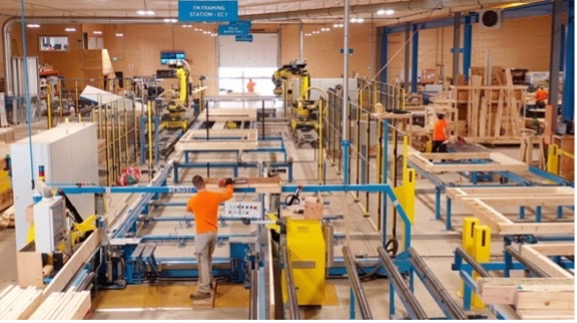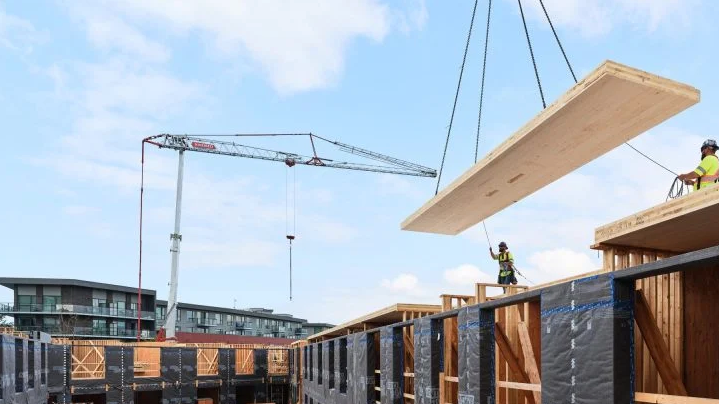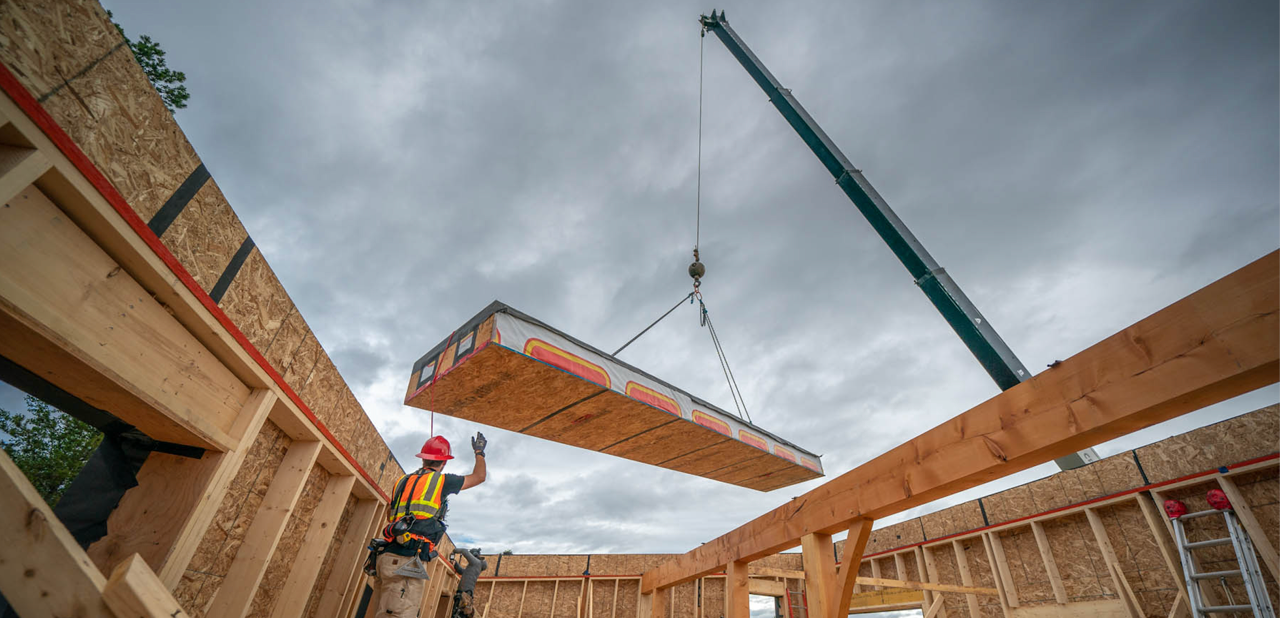Advancing meaningful solutions to our housing and climate crises
Delivering on top priorities for British Columbia
With supportive public and private sector practice, constructing wood frame and mass timber buildings in manufacturing plans can deal an A.C.E. Card for B.C. Communities.
- Drive step changes in construction speed and total annual housing completions. Deliver big construction cost savings.
- Increase market and non-market housing supply and offsite construction demand with strategic land use.
- Meet provincial building step code requirements.
- Reduce embodied carbon in new buildings by avoiding construction waste and displacing concrete in large buildings with mass timber.
- Offset US market losses by increasing domestic demand for mass timber.
- Create secure jobs in small towns, Indigenous communities, and big cities.
- Create more local economic value with lower forestry harvest volumes.
Offsite wood construction: How it works

Credit: Paradigm Panels
1. Offsite Manufacturing
Panels and modules are manufactured in factories, supporting labour productivity and quality and cost control, avoiding waste, and improving efficiency and performance.Excavation and foundation are completed in parallel with housing manufacturing, enabling time and cost savings.

Credit: Kindred Construction
2. Onsite Assembly
Prefabricated components are transported to the construction site on flat deck trucks, where they are craned into place, assembled and finished by a small crew, minimizing local disruption and dramatically reducing construction time.Solving big provincial and local problems: How we work
The Offsite Accelerator is collaborating with leaders from diverse sectors to solve some of the biggest challenges, grow demand for offsite construction, and enable governments to deliver on their priorities.
- Education and engagement through a variety of events and gatherings that spotlight success and opportunities
- Building capacity through the provision of resources and tools that support action and implementation
- Increased affordable housing and housing supply
- Support for permitting efficiencies that improve time and cost efficiency for both local government and industry
- Creation of manufacturing jobs in small towns, Indigenous communities and big cities
- Delivery on near zero-carbon construction requirements industry-wide
- Support for Indigenous reconciliation
- Local and provincial government decision makers
- Panel, modular, and mass timber manufacturers
- Builders, developers, and design professionals
- Non-market housing providers
- Forest products industry
- Post-secondary education and training institutions

Credit: Collective Carpentry
Strategic power players: Why local government matters
Permitting optimization
Adapting policies and processes to accommodate offsite construction like timely building approvals to enable excavation to happen at the same time as manufacturing, integrating CSA-certified manufactured components into the permitting process, and adjusting design guidelines to avoid material, time and labour-intensive architectural features.






